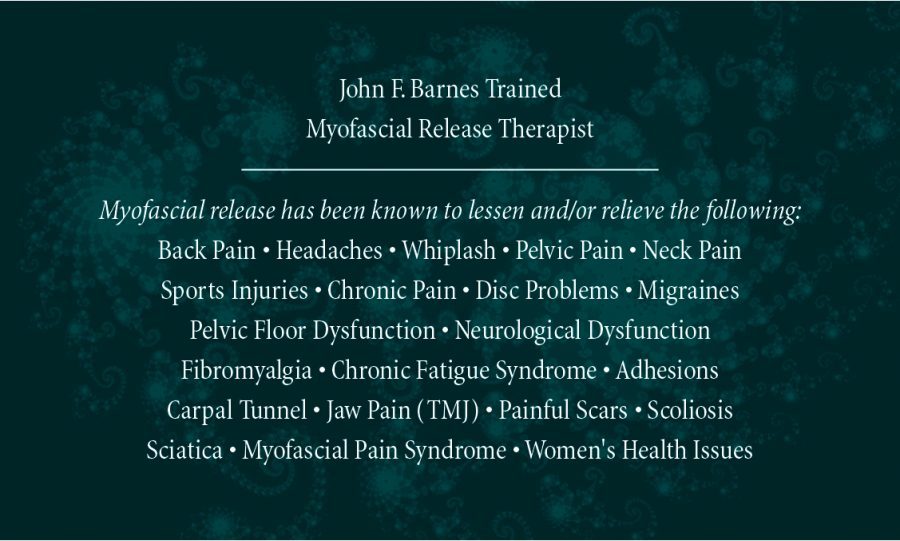My start with John F. Barnes’ Myofascial Release
I attended my first intensive training in MFR in September of 2015 and have continued to grow and deepen my knowledge of this profoundly healing modality with continuation of his coursework. I am considered “Expert Level”, according to the Barnes standards. I continue to repeat his coursework, as it deepens my intuitive and proprioceptive senses.
Tips for Success with MFR
Thank you for choosing MFR. You will notice as you begin treatment, that MFR is quite un-like any form of body work that you may have experienced. With this in mind, it is helpful to outline a few tips that will help you find great success in your MFR journey.
Your Body Can Heal!
It is important to know first that your body has the ability to heal. Whatever may have happened that you brought you here, you have survived. Your body is resilient. What we do here is open up your body via the fascial system, in order for your body to do what it is made to do. Even though you may be experiencing pain and discomfort in your body right now, it can change and it will change.
Your Body Feel Emotions.
Your body feels. Your brain thinks. Feelings, also known as “emotions”, are a part of releasing pain and dysfunction in our body. Emotions are felt and expressed with the body and experienced and labeled in the mind. It is encouraged that you be present in your body to notice what you are feeling and experiencing, for it is this process that will help you to notice and let go of long-held emotions or patterns of movement that helped create your pain.
Have a goal.
Having a clear and realistic goal for treatment will help you achieve the results you seek. While being “pain-free” sounds nice, it is not completely realistic. Having a clear goal in mind to share with your therapist will help you and your therapist achieve success. An example of a clear goal: “I would like to feel stable and strong in my low back while working, and would like to be able to increase my ability to run greater distances.” The more you commit yourself to your goal, the greater your success will be. Try using positive words to build your goals, and include images of what you want. See yourself as healthy and vibrant, doing what you enjoy.
Healing Crisis.
As you move through your treatments, you may experience what we call a “healing crisis”. This can include mild to intense workout pain, the feeling of emotional chaos, or physical pain. While, this may be uncomfortable, it IS part of the healing process. Your body has been holding on to a pattern of restriction for a while, and when it finally gets released, you may feel it in the form of a “healing crisis”. When you have been out of touch with part of your body due to fascial restriction, what you experience in a healing crisis is more of a “waking up” process. Allowing yourself to feel this is important to the process, as is being gentle with yourself.
Communication.
Communication with your therapist of what you are experiencing will help your therapist know you better. On occasion, your therapist will ask if you notice anything during or after a session. There is no wrong answer. Everything is valid. Even if you are feeling “nothing” – nothing is something! Even if you “feel nothing”, you are still getting benefit from the session.
Movement. On occasion, you will feel as though your body wants to move, twitch or shake. We encourage you to allow this to happen. Movement during treatment is quite natural as fascia is three-dimensional and our body is made to move. Restrictions run in a non-linear pattern that will involve movement to release. If you have injury due to trauma, it is likely that they injury occurred when the body was in motion. To fully release the trauma pattern held in the fascial system, “unwinding” is recommended and necessary as part of your treatment. Unwinding is an enlightened movement that occurs when you feel safe, and can let go of control and allow your subconscious mind to release the pattern of trauma that is trapped within the fascial system. Your therapist is trained to facilitate this with you. And you are in a safe place to let go of past trauma and allow your body to heal itself.
(Please note – When preparing for your MFR session, after showering – please refrain from applying any oils or lotions to your face or body the day of your appointment. )


